By Laura Grimes
One fabulous day recently at the National Gallery in London a whole class of schoolchildren wearing matching blue uniforms were sprawled on the floor drawing intently. They chatted and giggled quietly, but they were focused.
They attracted me like honey. I edged closer and watched them. Some of their drawings were just spindly stick figures. I watched them show each other their work and point to the giant painting they were studying.
A young man sat on a cushioned bench behind them and drew in a sketchbook. I thought he was with the group. A teacher chatted with him. And then she asked all the students for their attention.
She introduced the young man and asked if he would talk. I realized then he just happened to be there. He smiled to all the kids, leaned forward, turned around his sketchbook and held it up. Then a bit shyly but cheerfully he told them all about it.
I was busy scribbling notes and remembering this post by Mr. Scatter about young people haunting the halls of museums and copying the masters to learn their techniques. And I was remembering this follow-up post about an exhibit this summer at the Portland Art Museum of Old Master drawings from the Crocker Art Museum and a drawing class that will be offered.
And I was remembering taking the Small LSB to the Portland Art Museum a few years back and quietly nuzzling side by side on a bench with our sketchpads, even though one of my dirty little secrets (among many) is that I can’t draw worth a lick. (Memo to self: Do again soon, even if you have to fake the drawing bit.)
What were the students and the young man at the National Gallery so intent on copying? This:
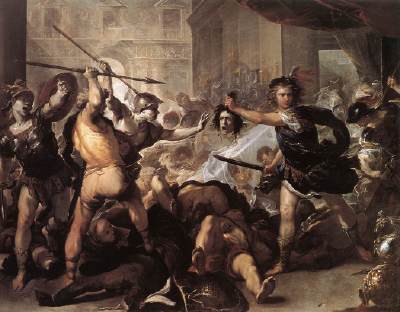
Excellent, I thought! A whole class of young schoolkids all focused on a painting that has a gory beheading, a wedding and turning soldiers to stone. Now THAT’SÂ an education! What a way to learn about the Greek myths.
About the painting:
Luca Giordano (1634-1705)
Perseus turning Phineas and his Followers to Stone, c. 1670
Oil on canvas, 285 x 366 cm
National Gallery, London
*
Mr. Scatter reminds me that The Portland Art Museum has a painting by Giordano: Battle of the Lapiths and the Centaurs is a largish study for the huge final version from the State Hermitage Museum in St. Petersburg, Russia. It was a centerpiece of the museum’s Stroganoff exhibition in 1999-2000.
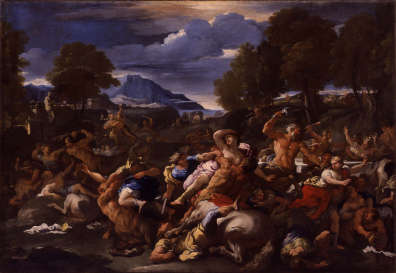
*
But, wait. I was talking about kids. I’m sure I was.
A few days after the National Gallery I was taken with a not-so-big painting of a tree at the Victoria and Albert Museum. That was it. One big, fantastic tree. The bark was thick and textured. Just makes you want to wrap your arms around it, doesn’t it?
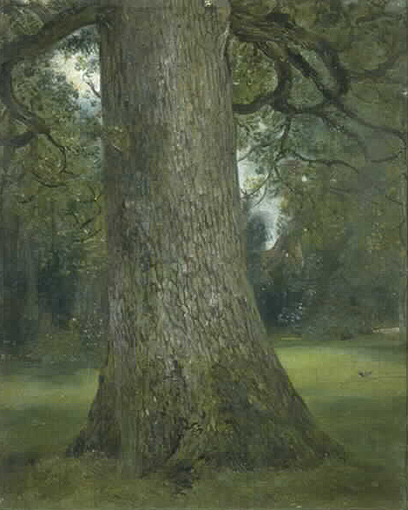
John Constable (1776-1837)
Study of the Trunk of an Elm Tree, about 1821
Oil on canvas
Read all about Constable here and here.
Ah, but I promised kids. The card displayed at the V&A had a choice bit worth sharing:
The artist’s friend and biographer CR Leslie recalled: ‘I have seen him admire a fine tree with an ecstasy of delight like that with which he would catch up a beautiful child in his arms.’
*
Not far away from the tree, I came across this unfinished study for a painting.
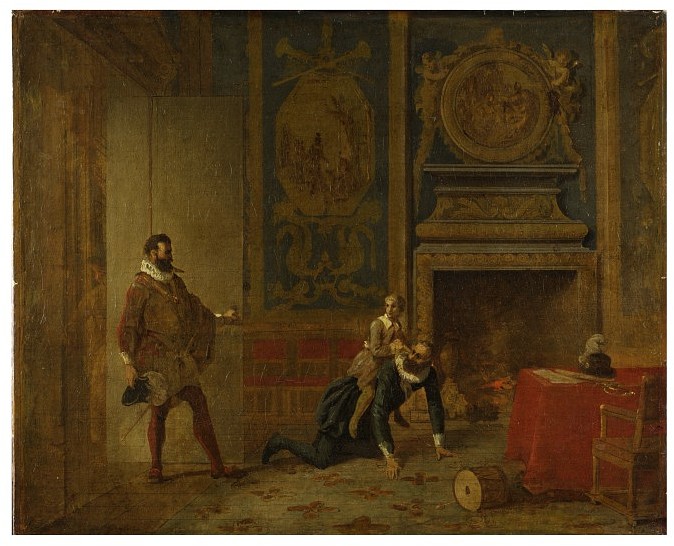
Jean-Auguste-Dominique Ingres (1780-1867)
Henry IV, the Dauphin and the Spanish Ambassador, about 1817
Oil on canvas
The card tells the story behind it:
Henry IV, King of France from 1589 to 1610, was celebrated for his wit and humanity. An ambassador once found him playing horse with his children. The king asked if he were also a father. When the ambassador replied that he was, Henry said, ‘Then I shall finish my round.’
A few days later at the Wallace Collection I was delighted to discover a similar painting with the same scene. I tugged on the sleeve of The Pantsless Brother.
“Look! We saw something like this the other day!” The Wallace Collection, an incredibly delightful museum that feels like an intimate and exquisitely appointed home, alas did not have any cards explaining the paintings. But no matter. I whipped out my little notebook and read the story to him.
What were we looking at?
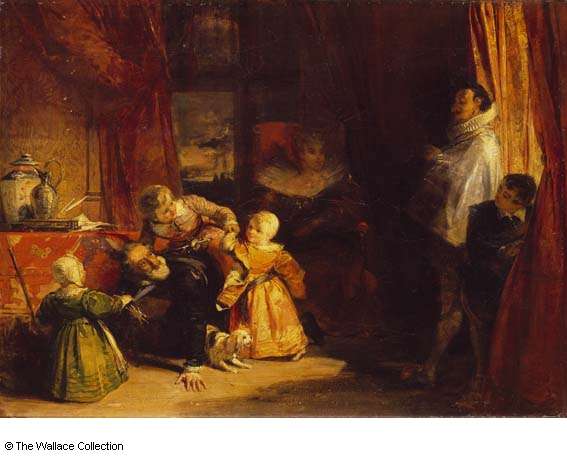
Richard Parkes Bonington
Henri IV and the Spanish Ambassador, c. 1827
Oil on canvas
38.4 x 52.4 cm